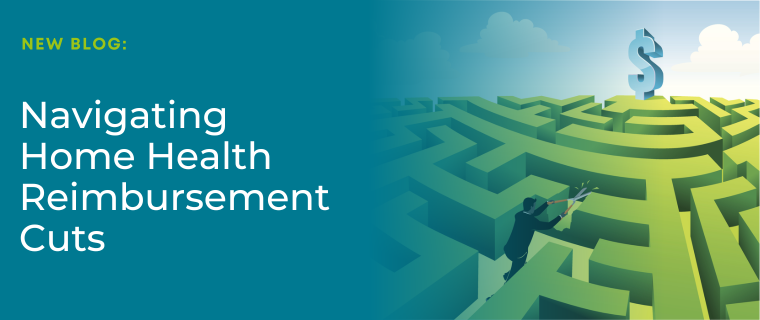Home Health Technology—What’s in it for the clinician?
By Katie Cunningham, Medalogix’s client experience manager
As Medalogix’s client experience manager, my job is to ensure that our home health clients are able to deploy our software to its best ability—all in effort to help them improve care and reduce costs.
Prior to Medalogix, I worked at NYU Langone Medical Center as well as a home health agency on NYC’s Upper East Side as a staff occupational therapist. After working on the clinical side, I decided I wanted a career that connected my business background (having previouslyworked in a B2B association for six years) with my clinical experience. I learned about Medalogix and was blown away by their mission. They were, and still are, creating a solution my clinical colleagues, and their patients, need. I had to be a part of it.
At the same time, I understand that many clinicians are so busy caring for their patients and filling out paperwork, the last thing they’re considering is the latest and greatest home healthtechnology.
When I was in OT school, which wasn’t too long ago, we learned to document patient information on paper rather than in an EMR. This just shows how quickly the healthcare industry is changing. The clinician is now challenged with adopting evolving technological solutions while, most importantly, providing optimal patient care—which is more difficult than you may imagine.
I continually share the clinician’s perspective with my Medalogix clients. After all, to build a tool clinicians are going to use everyday, you must understand what a clinician’s day looks like. It’s a little something like this:
Clinicians’ schedules are non-stop. They have back-to-back appointments with patients all day. In the miniscule windows between patient appointments, clinicians are expected to document their last patient’s visit and review their next patient’s history. If that’s not enough, home health clinicians are also tasked with driving to their next patient. Phew.
As I made the transition to the analytical side of home care I was struck by the potential impact these tools can and are having in our industry. I need to say this very clearly to my clinician friends: Medalogix’s technology will not add to your stress—it’ll only alleviate it.I promise.
Here are the top three reasons clinician’s value Medalogix.
1.Decreases manual work.Prior to Medalogix, our home health clients’ clinicians spent about 90 minutes manually combing through each patient’s file to assess whether the patient may benefit from hospice care. Medalogix technology decreases this time to just 7 minutes while enhancing identification quality. Clinicians’ time is best served doing what they do best—caring for patients. Medalogix frees them from paperwork to do just that.
2.Limits subjectivity. At Medalogix, our job is not to replace the clinician’s insight or decision—we’re here to augment it. The clinician will always have a personal understanding of his or her patient’s condition that analytics alone can’t quantify. Our technology won’t get in the way of a clinician’s intuition or experience. Medalogix is here to help identify and reinforce the care-decision-making process by providing objective data insights and operational workflows. We’re the quantitative checkpoint to a clinician’s qualitative understanding.
3.Improves quality of life.In every phase of the care continuum, including end of life care, a clinician’s primary concern is to improve a patient’s quality of life. For a clinician to appropriately identify a patient for hospice, sit down with the family and have this very serious conversation, the clinician must have a clear picture of the patient’s health status. Medalogix provides clinicians with predictive analytics to help ensure clinicians are having the right conversations with the right patients.
Why is this so important? When the appropriate patients transfer to hospice, the patient’s care satisfaction improves and the patient actually lives longer.
While my points focus on our Bridge solution, all of Medalogix’s solutions are designed to augment and facilitate the clinician’s goal of providing the best care to his or her patients.
Related Blogs

Navigating CY 2025 Home Health Reimbursement Cuts: Medalogix Offers Innovative Solutions to Enhance Efficiency and Outcomes
As the Home Health industry grapples with the CY 2025 proposed rule, we ...

Solving the Home Health Maze: Referral & Intake
The CMS Office of Burden Reduction & Health Informatics (OBRHI) coll...

Medalogix Muse and the Proposed Regulatory Changes for FY 2025
Steven Shelton, MBA, MSN, RN, CHPN; Director, Clinical Services In th...


